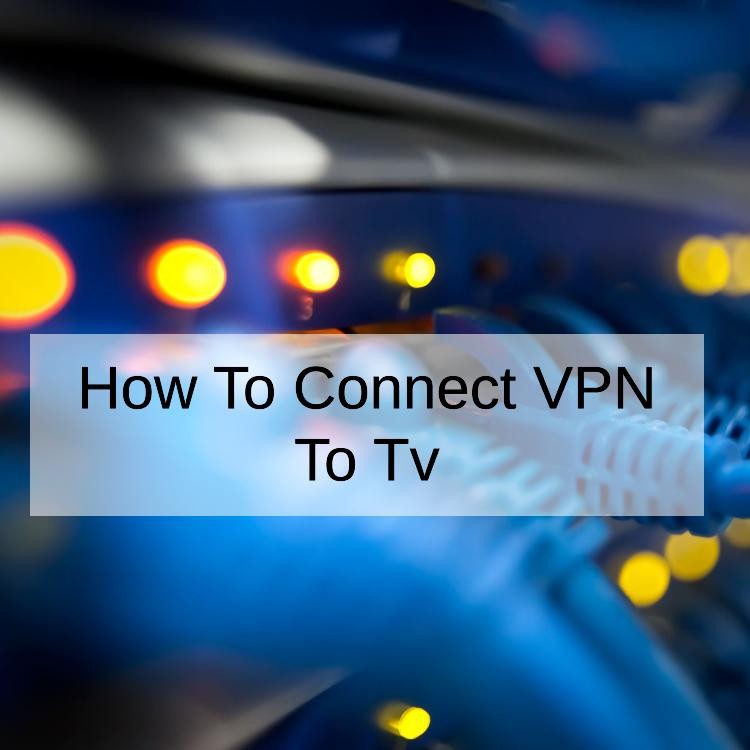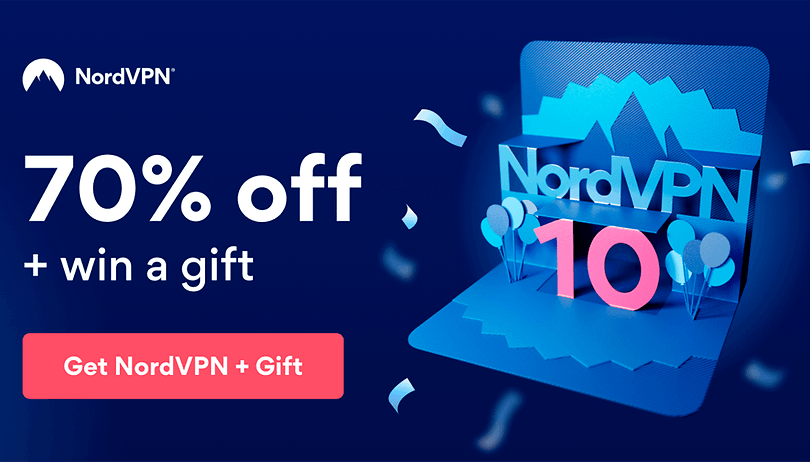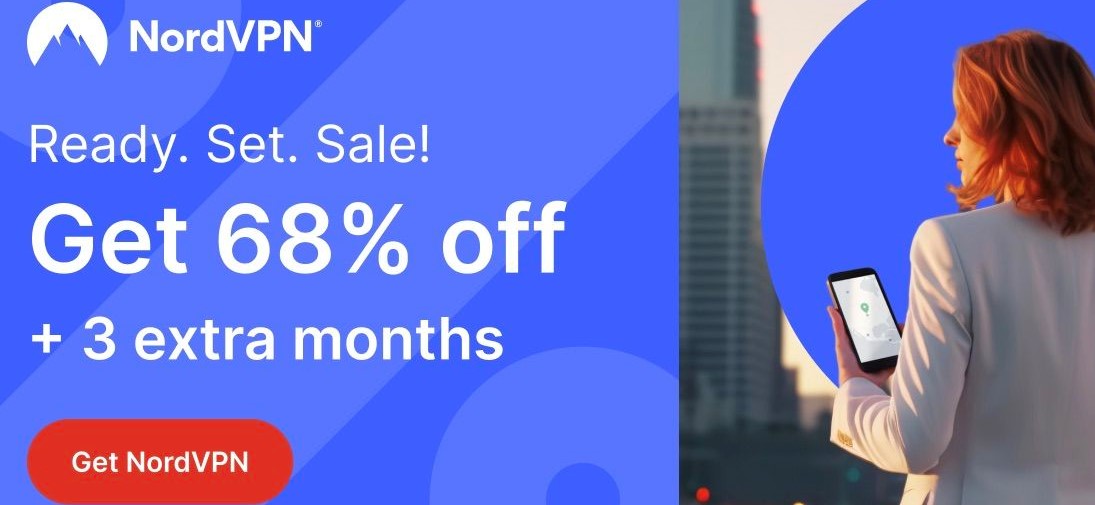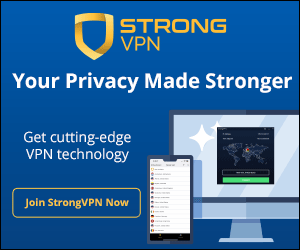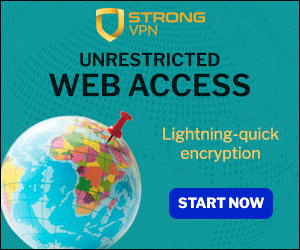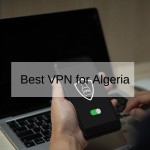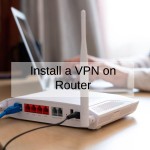Let's start with the basics. What exactly is a VPN, and why is it important to connect it to your TV? A VPN is a tool that encrypts your internet connection, ensuring that your online activities remain private and secure. By connecting to a remote server through a VPN, your internet traffic is routed through an encrypted tunnel, protecting your data from prying eyes.
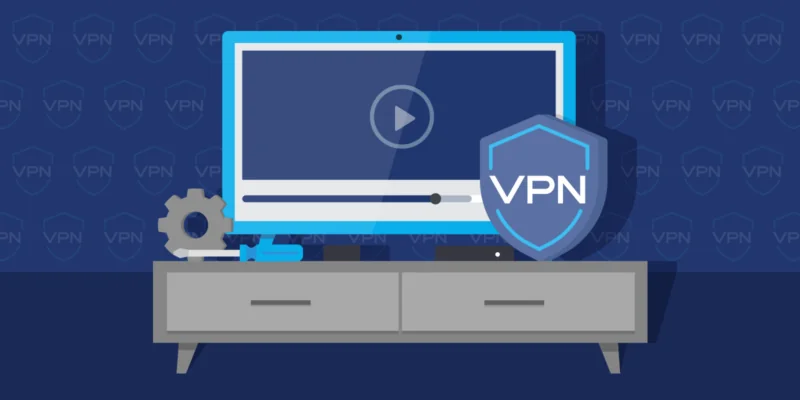
When it comes to streaming content on your TV, connecting to a VPN adds an extra layer of security, especially if you're accessing geo-restricted content or streaming from unsecured networks. Additionally, a VPN can help you bypass censorship and throttling by your internet service provider (ISP), ensuring a smooth streaming experience.
Understanding VPN
Before diving into the steps of connecting a VPN to your TV, it's essential to understand how VPNs work and what features to look for in a VPN service. A VPN encrypts your internet connection by creating a secure tunnel between your device and a remote server. This ensures that your data remains private and secure, even when browsing on public Wi-Fi networks.
When choosing a VPN service, look for features such as strong encryption protocols, a strict no-logs policy, and a wide range of server locations. Additionally, consider factors such as speed, reliability, and compatibility with your TV platform.
Discover Hot Deals on Nord VPN - Start Saving Now!
Researching VPN Options
The first step in connecting a VPN to your TV is to research and choose a suitable VPN service. Start by searching for VPN options online, using keywords such as "VPN download" and "best free VPN." Look for reputable VPN providers that offer a free trial or money-back guarantee, allowing you to test their service before committing.
When evaluating VPN options, consider factors such as server locations, encryption protocols, and compatibility with your TV platform. Look for VPN apps that are easy to install and use, with intuitive interfaces that make it simple to connect and disconnect from the VPN server.
Choosing a VPN App
Once you've selected a VPN service, the next step is to choose a VPN appthat is compatible with your TV platform. Search for VPN apps using keywords such as "VPN app" and "VPN app download," and look for options that are specifically designed for smart TVs or streaming devices.
When choosing a VPN app, consider factors such as ease of installation, user interface, and available features. Look for apps that offer features such as split tunneling,which allows you to route only certain types of traffic through the VPN connection, or a kill switch, which automatically disconnects your internet if the VPN connection drops, preventing your data from being exposed.
Ready, Set, Save! Explore Private VPN Deals Today!
Setting Up VPN Gateway
With your chosen VPN app installed, it's time to set up the VPN gatewayon your TV. The VPN gateway is the server through which your internet traffic will be routed when connected to the VPN. Depending on the VPN service you've chosen, you may need to manually configure the VPN gateway settings on your TV.
To do this, navigate to the settings menu on your TV and look for the network settings. Here, you'll find an option to set up a VPN connection. Enter the details provided by your VPN service, including the server address, username, and password. Once the VPN gateway is set up, you can connect to the VPN server with the click of a button.
Installing VPN Application
If your chosen VPN service offers a dedicated app for your TV platform, installing the VPN application is a straightforward process. Simply search for the VPN app in the app store on your TV, vpn free download and install it, and follow the on-screen instructions to set up the VPN connection.
If your TV platform does not have a dedicated VPN app, you may need to use a workaround such as installing the VPN app on a compatible streaming device, such as an Amazon Fire Stick or Roku, and connecting your TV to the VPN through the streaming device.
Connecting TV to VPN Online
Once the VPN app is installed and configured, connecting your TV to the vpn onlineis as simple as launching the VPN app and selecting a server location. Most VPN apps will display a list of available server locations, allowing you to choose the one closest to your physical location for optimal performance.
After selecting a server location, click the connect button to establish a VPN connection. Depending on the speed of your internet connection and the distance to the VPN server, it may take a few moments for the connection to be established. Once connected, your TV's internet traffic will be encrypted and routed through the VPN server, ensuring your privacy and security while streaming.
Unbeatable Deals Await! Dive into Pure VPN Now!
Exploring Free VPN Options
While many VPN services offer paid subscription plans, there are also several free VPN options available. When exploring free VPN options, it's essential to choose a reputable provider that prioritizes user privacy and security.
Look for free VPN services that offer strong encryption, a strict no-logs policy, and a wide range of server locations. Keep in mind that free VPN services may have limitations, such as
data caps, limited server locations, and slower connection speeds compared to paid alternatives. Additionally, some free VPN services may display ads or collect user data to monetize their service.
When using a VPN free, it's essential to carefully review the provider's privacy policy and terms of service to understand how your data will be handled. Additionally, be aware that free VPN services may not offer the same level of customer support or reliability as paid alternatives.
Configuring VPN Settings
Once your TV is connected to the vpn application, you may want to configure additional settings to customize your VPN experience. Most VPN apps offer a range of settings that allow you to tailor the VPN connection to your preferences.
For example, you may want to enable features such as split tunneling, which allows you to route only specific apps or websites through the VPN connection while leaving others unaffected. You can also adjust settings such as the VPN protocol and encryption strength to optimize performance and security.
Testing VPN Connection
After configuring your VPN settings, it's essential to test the VPN connection to ensure that it's working correctly. Start by verifying that your TV's IP address has changed to reflect the IP address of the VPN server you're connected to.
You can do this by visiting a website such as WhatIsMyIPAddress.com or using a network diagnostic tool on your TV to check the IP address. If the IP address matches the location of the VPN server, it means that your TV is successfully connected to the VPN.
Next, test the VPN connection by streaming content from a geo-restricted website or service. Try accessing content that is only available in certain regions to confirm that the VPN is effectively bypassing geo-blocks and allowing you to access the content.
Troubleshooting VPN Connection Issues
If you encounter any issues while connecting to or using the VPN, don't panic. VPN connection issues are common and can usually be resolved with a few simple troubleshooting steps.
First, try disconnecting and reconnecting to the VPN server to refresh the connection. If that doesn't work, check your internet connection to ensure that it's stable and
reliable. Sometimes, a weak or unstable internet connection can cause VPN connection issues.
If you're still experiencing problems, try switching to a different VPN server location to see if that resolves the issue. It's possible that the server you're currently connected to is experiencing high traffic or technical difficulties.
If none of these steps resolve the issue, reach out to the customer support team of your VPN provider for assistance. Most VPN services offer 24/7 customer support via email, live chat, or phone, and they should be able to help you troubleshoot the problem and get your VPN connection back up and running.
Facts on how to connect vpn to tv
Below is a detailed comparison across various aspects of connecting a VPN to a TV:
Compatibility:
- Smart TVs: Most modern smart TVs have built-in support for VPN connections. However, the availability of VPN support varies depending on the brand and model.
- Streaming devices: Alternatively, you can connect a VPN to your TV by using a streaming device such as Amazon Fire Stick, Roku, or Chromecast. These devices often have dedicated VPN apps available.
Setup Process:
- Smart TVs: Setting up a VPN directly on a smart TV typically involves navigating through the TV's settings menu to locate the network settings and then configuring the VPN manually or via a downloadable app.
- Streaming devices: The setup process for connecting a VPN to a streaming device usually involves downloading a VPN app from the device's app store, installing it, and then configuring the VPN settings within the app.
VPN Compatibility:
- Smart TVs: Some smart TVs may have limitations on which VPN services they support due to differences in operating systems and app availability.
- Streaming devices: Most streaming devices support a wide range of VPN providers, allowing you to choose from various options based on your preferences.
Network Speed and Performance:
- Smart TVs: Directly connecting a VPN to a smart TV may result in slower network speeds compared to using a streaming device due to potential hardware limitations and processing power.
- Streaming devices: Using a VPN on a streaming device can offer more consistent performance since these devices are specifically designed for streaming content and may have better hardware specifications.
Ease of Use:
- Smart TVs: Connecting a VPN directly to a smart TV may require more manual configuration and technical know-how, which could be challenging for some users.
- Streaming devices: Using a VPN on a streaming device is often more user-friendly, as it typically involves downloading and installing a VPN app from the device's app store, similar to installing apps on a smartphone.
Supported VPN Protocols:
- Smart TVs: The VPN protocols supported by smart TVs may vary depending on the manufacturer and model. Common protocols include OpenVPN, PPTP, and L2TP/IPsec.
- Streaming devices: Most streaming devices support a wide range of VPN protocols, including OpenVPN, IKEv2, and L2TP/IPsec, providing flexibility in choosing a VPN provider.
Security and Privacy:
- Smart TVs: When connecting a VPN directly to a smart TV, it's essential to ensure that the VPN service provider offers robust encryption and privacy features to protect your data and online activities.
- Streaming devices: Using a VPN on a streaming device can offer similar levels of security and privacy as using a VPN on a computer or smartphone, provided that you choose a reputable VPN provider.
Device Management and Updates:
- Smart TVs: Managing and updating VPN settings on a smart TV may require accessing the settings menu periodically to check for updates or make changes.
- Streaming devices: VPN apps on streaming devices often receive regular updates from the app store, making it easier to stay up-to-date with the latest security patches and features.
In conclusion, while both methods offer ways to connect a VPN to a TV, using a streaming device may be more convenient and provide better performance and compatibility with a wider range of VPN services. However, the choice ultimately depends on your specific TV model, preferences, and technical proficiency.
Optimizing VPN Performance
Once your VPN connection is established and working correctly, you may want to optimize its performance for the best streaming experience. There are several ways to optimize your VPN connection, depending on your preferences and the capabilities of your VPN service.
One way to optimize VPN performance is to choose a server location that is closest to your physical location. This can help reduce latency and improve connection speeds, resulting in smoother streaming and faster load times.
Additionally, you can experiment with different VPN protocols and encryption settings to find the optimal balance between security and performance. Some VPN protocols, such as OpenVPN and WireGuard, are known for their speed and efficiency, while others may offer higher levels of security but slower speeds.
How to Set Up Connect VPN to TV
Setting up a VPN connection on your TV may seem daunting at first, but with the right guidance, it can be a straightforward process. Follow these steps to set up a VPN connection on your TV:
Research the Best VPN Right Now: Before you begin, research and choose a reputable VPN service that offers compatibility with your TV platform. Look for features such as strong encryption, a large server network, and user-friendly apps.
Easy Way to Install Connect VPN to TV: Most modern TVs support VPN connections through dedicated apps or manual configuration options. Install the VPN app from your TV's app store, or manually configure the VPN settings using the instructions provided by your VPN provider.
Configuration Connect VPN to TV: Once the VPN app is installed or the manual configuration is completed, launch the VPN app on your TV and log in using your VPN credentials. Select a server location from the available options and connect to the VPN.
Automatic Configuration Connect VPN to TV: Some VPN providers offer automatic configuration options for certain TV models. Check if your VPN provider offers this feature and follow the instructions provided to automatically configure the VPN connection on your TV.
Manual Configuration Connect VPN to TV: If automatic configuration is not available, you can manually configure the VPN connection on your TV by entering the server address, protocol, and other settings provided by your VPN provider. This process may vary depending on your TV model and operating system.
Why and When to Use Connect VPN to TV
Now that you know how to set up a VPN connection on your TV, you may be wondering why and when you should use it. Here are some scenarios where using a VPN with your TV can be beneficial:
- Access Geo-Restricted Content: With a VPN, you can bypass geo-restrictions and access streaming content that is only available in certain regions. Whether it's unlocking...
Why Should You Use Connect VPN to TV
There are several compelling reasons why you should consider using a VPN with your TV:
Enhanced Privacy and Security: By encrypting your internet connection, a VPN protects your online activities from prying eyes, including hackers, ISPs, and government surveillance. This is especially important when streaming content on public Wi-Fi networks or accessing sensitive information on your TV.
Bypass Geo-Restrictions: Many streaming services impose geo-restrictions on their content, limiting access based on your geographic location. With a VPN, you can bypass these restrictions and access a wider range of content from around the world.
Prevent ISP Throttling: Some ISPs engage in throttling, slowing down your internet connection based on your online activities. By using a VPN, you can encrypt your traffic and prevent your ISP from throttling your connection, ensuring a smoother streaming experience.
How to Get a Connect VPN to TV
Getting a VPN connection for your TV is a straightforward process. Here's how you can get started:
Choose a VPN Provider: Research and choose a reputable VPN provider that offers compatibility with your TV platform. Look for features such as strong encryption, a large server network, and user-friendly apps.
Sign Up for a VPN Plan: Once you've selected a VPN provider, sign up for a subscription plan that meets your needs. Most VPN providers offer a range of subscription options, including monthly, annual, and multi-year plans.
Download and Install the VPN App: If your TV platform supports VPN apps, download and install the VPN app from the app store on your TV. Alternatively, you can manually configure the VPN settings on your TV using the instructions provided by your VPN provider.
Connect to a VPN Server: Launch the VPN app on your TV and log in using your VPN credentials. Select a server location from the available options and connect to the VPN. Once connected, your TV's internet connection will be encrypted, ensuring your privacy and security while streaming.
Ensuring Privacy and Security
Finally, it's essential to prioritize privacy and security when using a VPN to stream content on your TV. While VPNs offer enhanced privacy and security compared to browsing without a VPN, it's essential to choose a reputable VPN provider and follow best practices for online security.
Make sure to keep your VPN app and operating system up to date with the latest security patches and updates. Additionally, avoid sharing sensitive personal information or engaging in risky online behavior while connected to the VPN.
By following these tips and best practices, you can enjoy a secure and private streaming experience on your TV with the added protection of a VPN.
Connecting a VPN to your TV is a straightforward process that can significantly enhance your online privacy and security while streaming content. By choosing a reputable VPN service, installing the VPN app on your TV, and configuring the VPN settings to your preferences, you can enjoy a safe and secure streaming experience without worrying about hackers, snoopers, or geo-restrictions.
Remember to research and choose a VPN service that meets your needs and budget, considering factors such as server locations, encryption protocols, and compatibility with your TV platform. Once you've selected a VPN service, follow the steps outlined in this guide to connect your TV to the VPN and optimize its performance for streaming.
If you encounter any issues along the way, don't hesitate to reach out to the customer support team of your VPN provider for assistance. With their help, you can troubleshoot any problems and ensure that your VPN connection is working correctly.
By taking the time to connect a VPN to your TV, you can enjoy a safer and more secure streaming experience, knowing that your online activities are protected from prying eyes. So why wait? Start streaming securely with a VPN today!
Remember, the internet is a vast and sometimes dangerous place, but with the right tools and precautions, you can enjoy all the benefits of streaming content on your TV without compromising your privacy or security. So go ahead, connect your TV to a VPN, and start streaming with confidence!
Commonly Asked Questions and Answer
Q What is a VPN, and why should I connect it to my TV?
- A VPN, or Virtual Private Network, is a tool that encrypts your internet connection and routes it through a remote server, ensuring privacy and security. Connecting a VPN to your TV adds an extra layer of security, protects your data from prying eyes, and allows you to bypass geo-restrictions to access content from around the world.
Q Can I connect any TV to a VPN?
- Most modern smart TVs support VPN connections through dedicated apps or manual configuration options. However, older or less advanced models may not have built-in VPN support. In such cases, you can still connect your TV to a VPN by using a compatible streaming device, such as an Amazon Fire Stick or Roku, and installing the VPN app on the device.
Q How do I choose the best VPN for my TV?
- When choosing a VPN for your TV, consider factors such as compatibility with your TV platform, server locations, encryption protocols, and user-friendly interface. Look for reputable VPN providers that offer dedicated apps for your TV platform and prioritize privacy and security.
Q Do I need to pay for a VPN to connect it to my TV?
- While there are free VPN services available, they often come with limitations such as data caps, slower speeds, and fewer server locations. For a reliable and secure VPN connection, it's recommended to invest in a paid subscription plan from a reputable VPN provider. Many VPN providers offer affordable subscription plans with various features and benefits.
Q What is the difference between automatic and manual configuration of a VPN on my TV?
- Automatic configuration involves using the VPN provider's dedicated app to set up the VPN connection on your TV. The app will automatically configure the necessary settings, including server selection and encryption protocols. Manual configuration, on the other hand, requires entering the VPN server details and settings manually into your TV's network settings.

